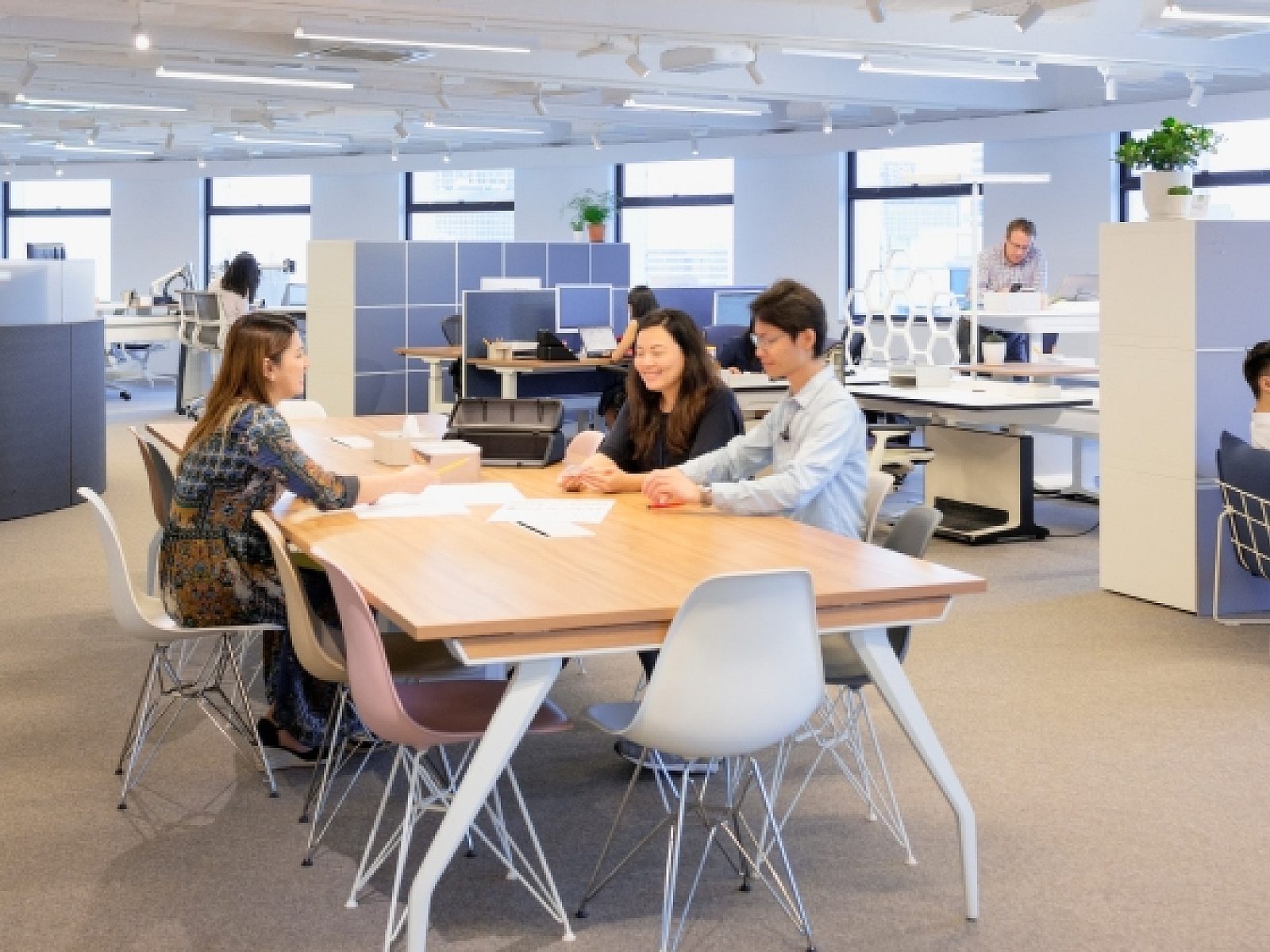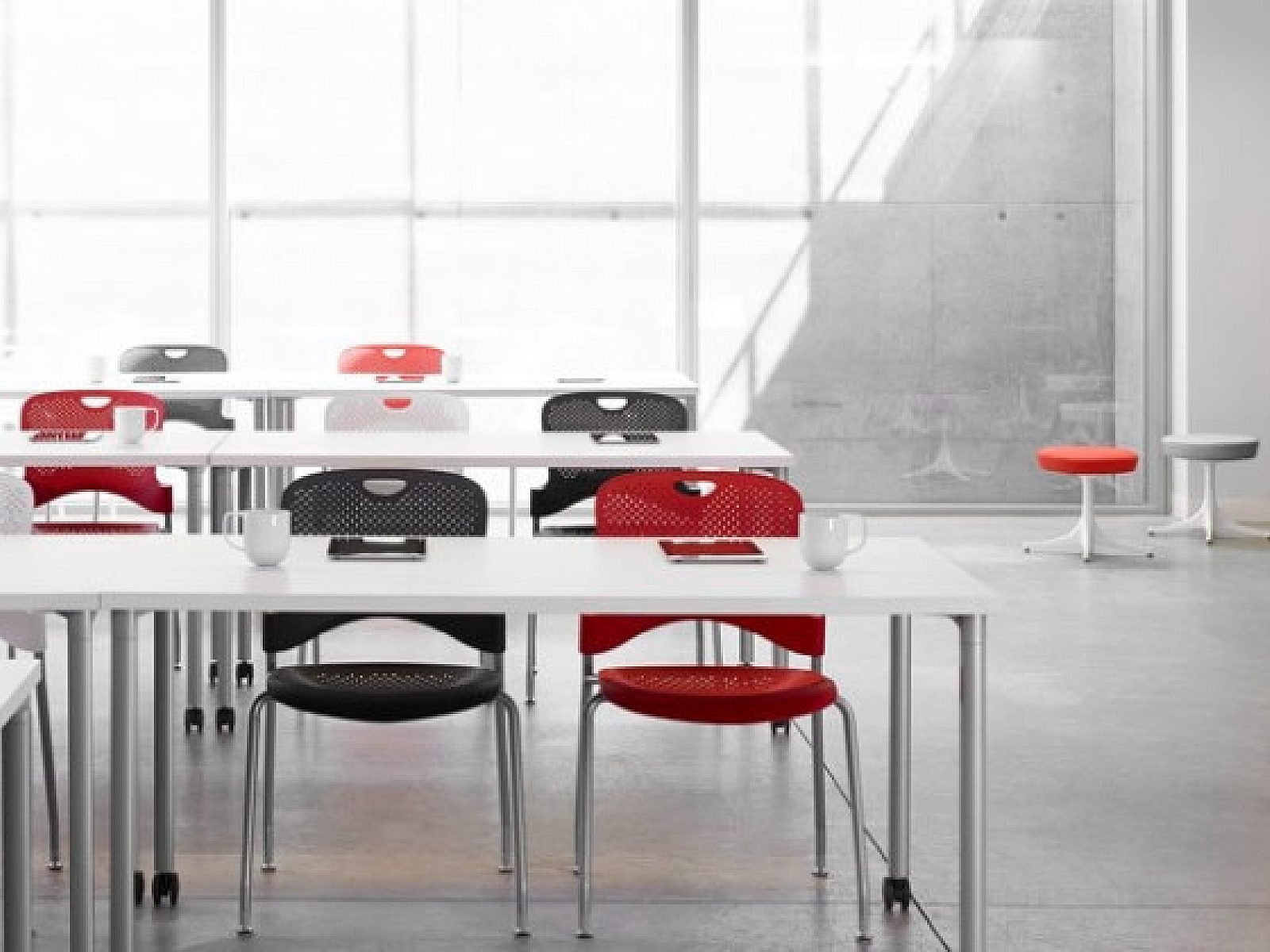- About Us
- Achieve More with Future of Work

Achieve More with Future of Work
Within any flexible or hybrid approach to workplace, it's important to create places that matter to your people.
To help places deliver on their potential, we’ve synthesized research and expertise from Herman Miller, Knoll, and our broader collective of brands into four place design principles. Not only do these principles draw upon insight gained over decades, but they also guide our exploration now and into the future. You can use these principles as a guide for engaging your people to uncover insight and envision a new experience of work for your organization.
Now let’s review the principles.
Principle one is: Places that matter start with people.
How and even why we design places today is different than it was ten, five, even two years ago. Yet this fundamental principle remains true: Places that matter start with people.
Understanding how people perceive the world is a prerequisite for creating places that matter. That’s because everything valuable about a place—its beauty, its function, its feeling—is conferred by the people in it. Just because human perspective is subjective, that doesn’t mean it can’t be explained, understood, and recognized as a source of meaning.
A key insight here is that people show up simultaneously as individuals, members of groups, and representatives of larger communities. As they move throughout their day, different interactions at the individual, group, and community level will take precedent depending on what needs to be done. These variable roles that people fill have an impact on what they value most in a place, whether that’s being able to gracefully host others, facilitate dialogue, or effectively tune out distractions.
The second principle is: Places that matter strengthen community.
Place is more valuable when it facilitates the relationships that help us generate value—for our families, our organizations, and the communities in which we live and work. That's how places that matter strengthen community.
Our activities connect us to one another, both directly and indirectly. Because place has an inherent ability to support or inhibit what we do within it, we can shape places to strengthen connection by facilitating the activities that bring people together—physically, emotionally, purposefully, and otherwise.
Trying to anticipate all the things people will do can be daunting, if not impossible. However, we can plan for activity based on the general nature of interactions between people and their work. There are two broad types of interaction sought by individuals, groups, and communities, one is aimed at producing a tangible outcome or a specific result while the other prioritizes open exchange and reflection upon ideas, information, and feelings. The first type of interaction tends to rely on task-oriented postures and environments that are fine-tuned for performance, while the second prioritizes more relaxed postures and emotionally evocative spaces.
The third principle is: Places that matter feel inclusive and personal.
Place is a reflection of people—both the fundamental things that make us all human, and the unique things that make us, well, us. This is why places that matter feel inclusive and personal.
The expression of a place should be based upon the unique cultures, communities, and individuals for whom it was designed. Rather than expecting people to conform to uniform typologies of place, places that matter express what is both authentic and aspirational for people. They consider the widest range of human ability and experience through inclusive design, while delivering an equitable experience for everyone. The best way to achieve this is to engage the people who will use a space as part of the design process.
Generally speaking, while we can see that communities need to socialize, groups need to collaborate, and individuals need to focus, the best support for those interactions can vary from person to person, team to team, and company to company. A great way to meet those diverse needs is to include a purposeful variety of settings directly informed by people’s needs.
The fourth principle is: Places that matter get better over time.
The value we derive from a place fluctuates based on a range of factors, from our emotional connection to it, to its ability to adapt to new uses. Place is never static, but places that matter get better over time.
Place is constantly evolving. Whether that evolution is to the benefit or the detriment of the people who use it requires deliberate action. When we create places that matter, we invest time, thought, energy, and emotion as well as capital in their continuous improvement, granting them the resilience to adapt to new people and patterns of use.
A place’s ability to improve is largely determined by intentional and strategic investment in its creation. Here, “investment” doesn’t necessarily mean spending a lot of money on furniture; it can mean dedicating appropriate time to consider what’s most important, putting a plan in place for experimentation and learning about new approaches to place, or simply making sure that you’re right-sizing the monetary spend for the challenge at hand.









